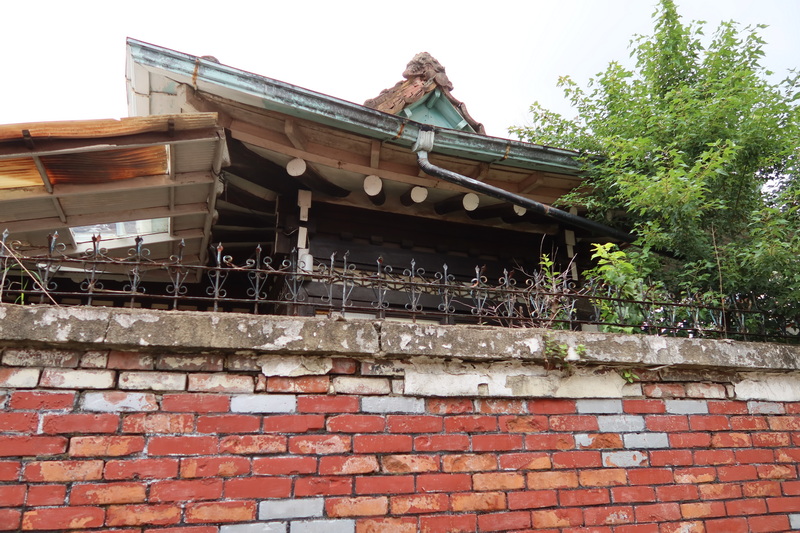Chapter 4: Gwangju’s Mass-Produced Hanok – Square or Round
By Kang Dong-su
Last time, we looked at the design history and material of mass-produced hanok roofs in Gwangju. Because it was a mass-production real-estate product, developers tried to adopt the concept of rich, noble people’s houses from the previous period to attract those common people who had a fantasy for roof-tiled houses with proper style and sometimes modified the original design to be better for trade. But they also had to reduce the cost as much as possible to supply the houses fast and affordably for the average individual, which led to a deterioration in structure quality. There are also a lot of ornamental roof details that were mostly derived from colonial period houses in this way.
For traditional Korean architecture, a structure is not just a structure. Depending on social class, there was a strict law regarding the structure of a house. For example, cylinder-shaped pillars were only used for the nobility, important people, or a man’s space in a building, as the round shape represented “sky,” while square pillars represented “earth.” This kind of discrimination in housing structure was based on Confucianism, and this strict hierarchy collapsed in the modern era. This chapter will show you how each structure of Gwangju’s mass-produced hanok developed through the modern period and made its own unique style.
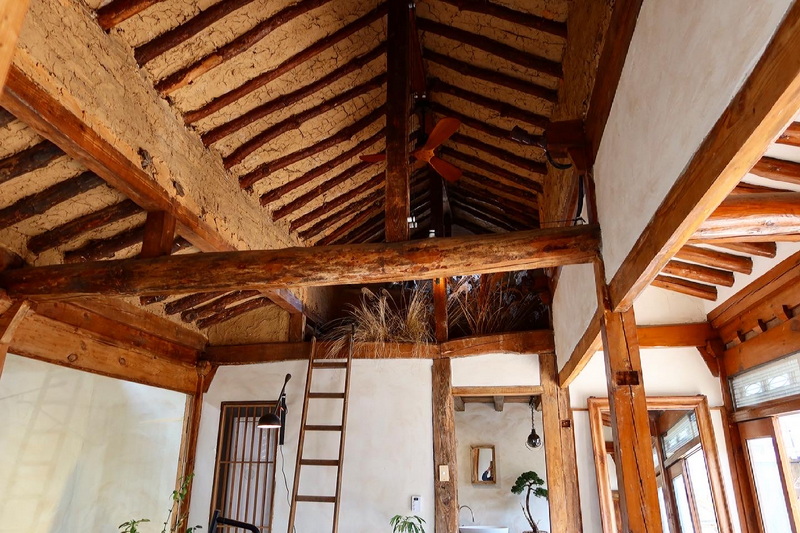
Roof Structures
As I briefly wrote about roof structures in the previous chapter, developers cut down on a lot of processes by not exposing rafters in ceilings (except for attics and sometimes front porches known as toenmaru, 툇마루). By doing that, they only had to plane the eaves and some parts of the house. The second thing we have to look into are square rafters on the edge of eaves called buyeon (부연). In the Joseon Dynasty, only those of high social rank could embellish their houses by adding these items, but starting in the late 19th century, as the new bourgeoisie could build their houses as they saw fit, they freely used these items as a decoration. They were also influenced by exotic styles like Western-style buildings or Japanese-Western styles. The people of Gwangju and Jeonnam Province started to make their buyeon rounded on the edge, which was used until the 1970s for mass-produced hanok. This design only exists in this region, and I think it came from Japanese-Western-style wooden buildings or Western missionaries’ houses. Those buildings usually had rounded rafters on the porch, and that style had an influence on newer hanok designed during the colonial period, which survived until the 1990s.
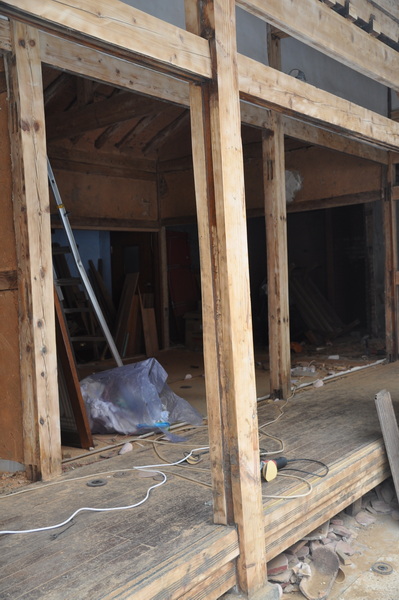
Beams and Pillars
Beams and pillars have long been two of the most symbolic parts of the hanok structure. Regarding the former, long and naturally curved crossbeams are a main charm of hanok that many quickly recognize. But you can only see short crossbeams on the front porches of mass-produced hanok in Gwangju, as they are usually hidden by plywood ceilings. The hidden structures sometimes look more like Japanese houses because making the rough structure and then covering the ceiling with plywood was a practice copied from Japanese colonial period houses or hybrid houses. As for pillars, there are a lot of different possible shapes, including rectangles, cylinders, polygons, entases, trapezoids, natural wood, and others. But for mass-produced houses, developers simplified their models, so it was mostly the rectangle or cylinder type (without the entasis or trapezoid technique). I mentioned in the introduction that the cylinder-type pillar was only allowed for high-ranking people and men. But during the 1970s, developers made a new type of cylindrical pillar with new technology: the wood lathe. They used huge cylindrical pillars for the facade with decorations on the top enabled by woodturning. Thanks to this new advancement, those who could afford to be middle class could buy this new, fancy cylindrical-pillar house irrespective of social status or sex.

Clay Walls
Bamboo strips, woven together with straw ropes, and clay-lime plaster finishing were still the dominant construction method for making hanok walls until the 1970s. But the quality of these walls decreased a lot compared to those of the previous era. Before, there were strong wooden sticks to support the bamboo strips standing in the middle of walls and jointed without nails. In earlier hanok, at least three layers of plaster were used to make the walls hard and intact. With the start of mass-produced hanok, bamboo sticks were substituted for wooden supports and they were jointed with nails. The plastering process was also simplified to just one layer of red clay, which was finished with lime plaster where it was exposed.
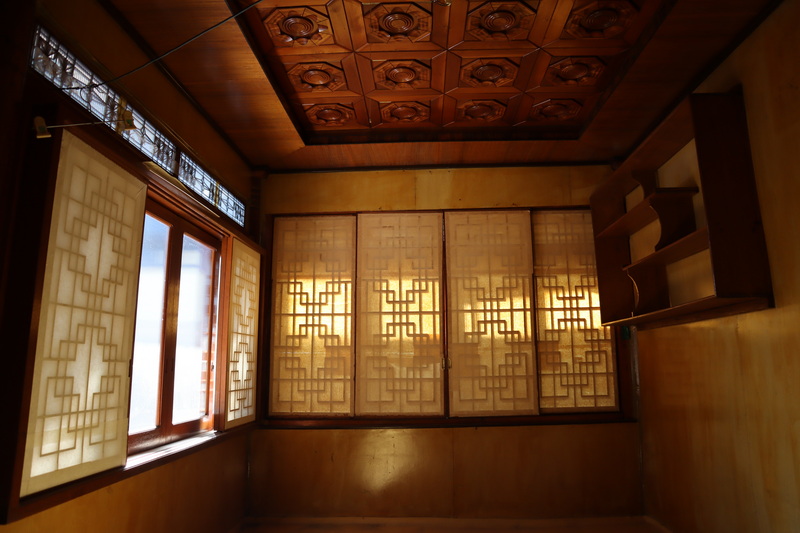
Decorative Structures
In the Joseon Dynasty, keeping housing structures as simple as possible was regarded as a virtue of modesty. However, in Gwangju, hanok of the rich in both the colonial period and the 1960s–1970s were far from that. Builders used a number of decorative structures from the previous Joseon-era nobility, Japanese buildings, or even Western-style carpentry. Chapiters at the tops of columns called judu (주두) jointers and smaller jointers, known as soro (소로), are some of the better examples of this. Even until the 1950s–1960s, most of the hanok in Gwangju did not have judu and soro, as only rich people’s houses did. But starting in the 1970s, developers started to use these decorative structures for mass-produced hanok in new residential hanok towns.
As for these decorative structures, Gwangju’s mass-produced hanok can be classified into two types, round and square. Square judu and soro were used for hanok starting from a long time ago, but only for high-ranking individuals. The people of Gwangju finally achieved the opportunity to have a house with these decorative structures in the 1970s. Moreover, they created a new style using the aforementioned woodturning technique for making soro and pillars. This woodturning skill actually came from the colonial period when Japanese carpenters made Western-style furniture. Those carpenters passed on their skills to Korean carpenters, and they in turn played a role during the 1960s–1970s in building the “new town” mass-produced hanok in Gwangju. This style (hanok built with woodturning techniques) only exists in Gwangju, and we can say it is the latest evolution in Gwangju hanok.
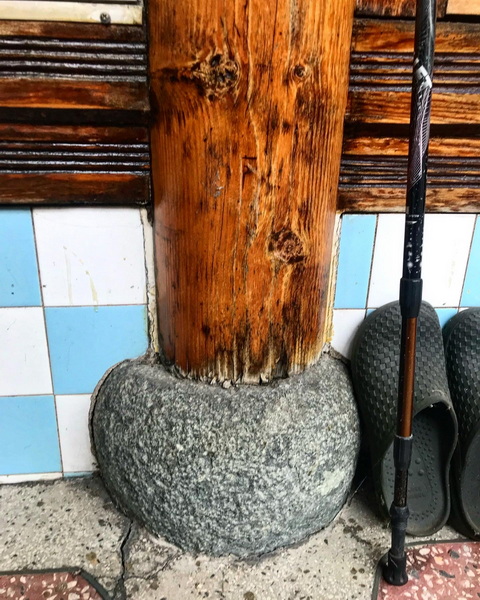
Foundation Stones
Foundation stone design also changed a lot from the Joseon Dynasty and received many influences from China and Japan. For residential homes, natural stones without fabrication were the most dominant type in the Joseon Dynasty. As with other building features, there were restrictions for using chiseled foundation stones based on the social hierarchy of the time. During the colonial period, the growing middle class in Jeonnam started to use different styles of foundation stones for their hanok. Trapezoidal shapes from Japan are one such example. (Korea does in fact have the same shape, but it is slightly different, as the Japanese stones are more angular.) Amphora-shaped stones from China became a new trend among the people of Jeonnam as well. This local trend lasted until the 1970s, as people remembered the standard of good houses, like those of the rich, from the previous era. In Gwangju, echelon-shaped stones became the standard for “square-type” hanok, while amphora-shaped stones became the standard for “round-type” mass-produced hanok.
I can say that the late 19th century to the 1950s was a period of new changes and experimentation in hanok. There were so many distinctive designs and styles during this period as people tried to mix all the different new cultural influences into the hanok style. But by the 1960s–1970s, all those new trials got boxed into one of two types, the “square-type” and “round-type,” for commercial real estate products. Even though most Koreans either do not know about or are ignoring the existence of mass-produced hanok in Gwangju, I think it is a really important architectural style showing the whole history of the turbulent modern period of Gwangju. If you know more about the history behind the details of hanok design, you will be surprised how many influences they encountered as they evolved through the decades.
The Author
Kang Dong-su is a traditional Korean carpenter born in Gwangju in the year 1996. He started studying and archiving historical architecture in Gwangju at the age of 17. He is currently the representative of his company, Baemui, which researches and renovates homes and historical architecture in Gwangju and the Jeolla provinces. Instagram @baemui.naru





